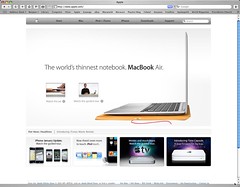Video Manipulation Could Make Regular People TV Producers
Video Manipulation Could Make Regular People TV Producers
Video manipulation is a process which uses a computer and video memory banks to allow people to create their own TV programs and eventually something I call a video book. I came up with the idea in 1976 in Springfield, Missouri and have a C+ on a paper I wrote for my TV production class at Southwest Missouri State University which deals with the idea. I even told Gene Roddenberry about the idea back then. But he never saw it become a reality.
You need a computer with as much memory capacity and capability as possible. The video memory banks will store much of the material that will need to be manipulated by the computer to construct the video program. You will also need at least three monitor screens with one preview monitor for the video information, another preview monitor for the computer generated images, and
the main monitor where everything will be assembled. You will also have to mix sound, dialog, and music with the system. So it might be best to have multiple sources for the audio portion of the production.
I find too many CG productions look cartoonish. Also, if you only have CG, it takes a long time to produce the images. But with video memory for referencing and manipulation, the images will look more real because they will be based on real images. If you blend the video with the CG, the CG will look more real and the fantastic will seem possible. The computer will determine such things as shadowing, reflections, natural motions, and other things that directors keep in mind when constructing scenes with real people and objects. At least with video manipulation you don’t need green screens because with spacial construction of
scenes, the computer will exclude what isn’t needed and include what is. If a spaceship is supposed to be 1000 feet long and made of metal, it will look exactly like what the producer wants it to look like and make viewers of the video that don’t know any better think it is real.
The scripts used for VM productions will have one side dedicated to the video production and the other side dedicated to the audio production. For faster production construction, there will be video and audio coding cues. Here’s an example: If character 1 is supposed to be running from the left side of the screen to the right side at 7 meters per second and be 20 meters away from a camera point-of-view, the image of the character running will be stored in a video memory bank and referred to. The video coding might be C-1/RUN/L-R/7 mps/20mFOCUS. Objects will
be placed around the character as well as other characters and living things. Establishing scenes might have location coding. A western street scene might be given the code L-14/OUT. A saloon might be given L-19/OUT for an exterior scene and L-19/IN for an interior scene. If a producer doesn’t have complete video coding, he will be able to program in what is needed with the computer on the main screen.
Audio coding will make the video portion come alive. If character 1 has his voice recorded, voice sampling will allow him to “speak” dialog. The producer will determine how the character is to speak. He could even speak into a mike and the voice sampler will match the character’s way of speaking with the words printed on the script that will be scanned into the computer. Sounds will be coded for easy reference too. A gunshot might
be GUN1/FIRE-S/45m which means gun number 1 is fired a single time from 45 meters away from where a camera would be. Other sounds will be coded and added to form audio layering. Even music will be included to make the scene sound like a TV production. The computer will adjust the quality of the voices and sounds.
Once everything from both preview monitors are assembled on the main monitor, the producer will determine when the scene is like he wants it to be. He will then place it on the master recording. At least with the video memory banks in conjunction with the CG, an object won’t need to be reconstructed all the time. Give it a code and you can do the rest with the computer. All motions will have to look natural before committng the information to the master recording.
It may take five or six days to construct
a two-hour program if you’re willing to work 18-hour days. After awhile, it should take less time when you use all the coding as a form of audio and video shorthand. A weekly series or a series of video books may take only ten minutes to produce a minute of video programming. The computer will do more of the work and get use to the scanning and programming format.
If images of real actors are used or copyrighted material, video rights will have to be paid just like audo rights to recorded information needs to have producers pay for the right to use it. This will be especially true if the video is being sold to the publc. But once all the rights are paid, the producer will be able to make copies to sell, if he chooses. People will become TV producers or video authors and sell programs to video stores or even networks just like people
sell books to publishing houses for printing and sale. The producer could make a good living off of video books if they sell well.
I have been doing a cable TV program since January 1985 and have deal with video manipulation since 1976 and believe it is the future of video proudction.
Article from articlesbase.com

